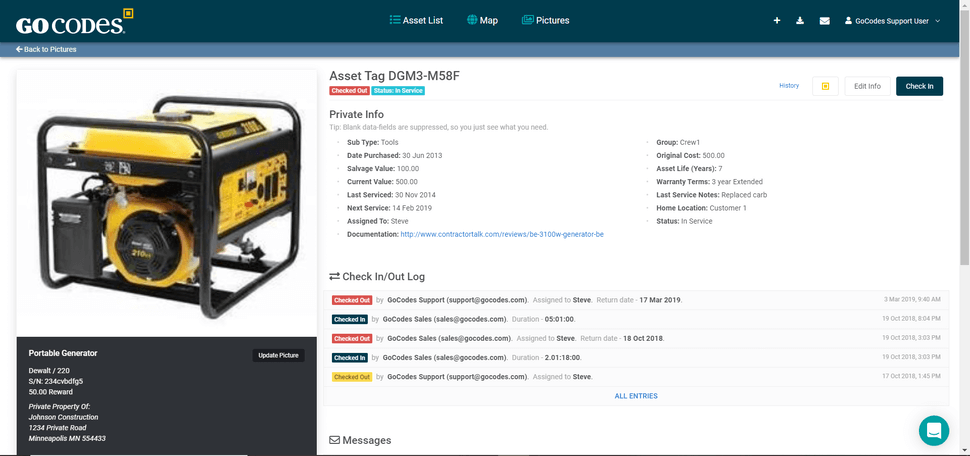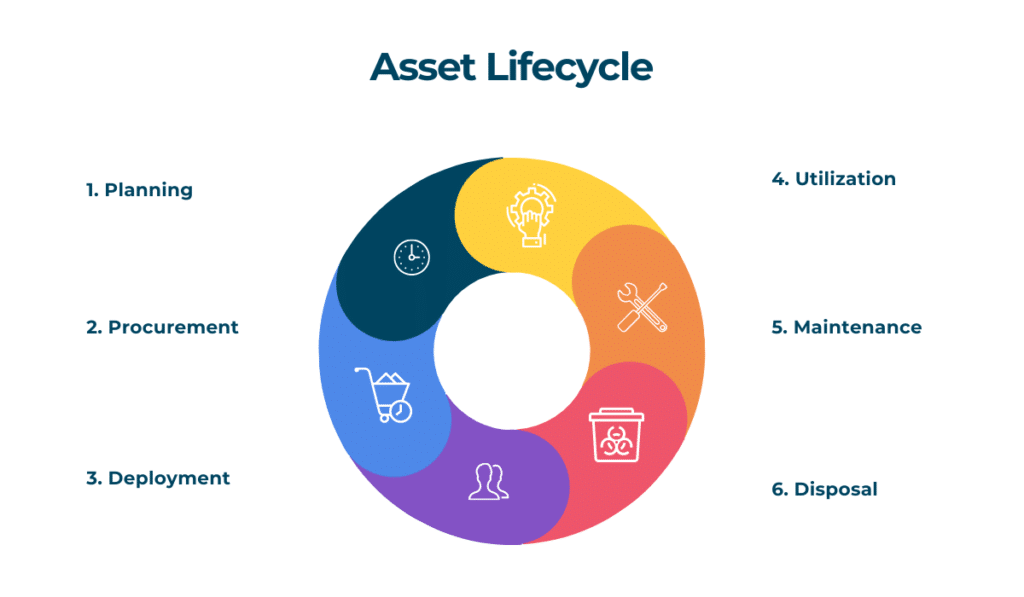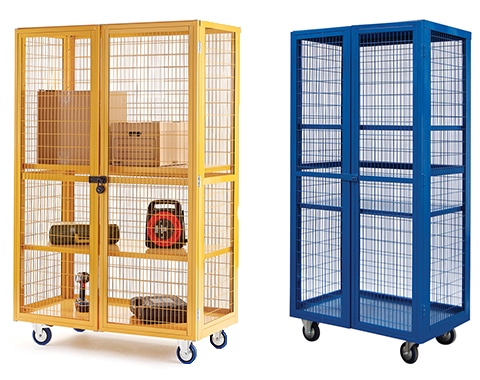Tracking and improving equipment utilization is an important way of making the most of your company’s assets.
It contributes to better efficiency, improved bottom lines, and more control over equipment movement and life cycles.
This post will assist you with beginning to track and improve equipment utilization.
You will get an insight into why equipment utilization is important, as well as how to begin the process of tracking equipment, equipment use coordination, and usage analysis.
You will also learn how equipment utilization minimizes downtime and the ways to use equipment attachment for great flexibility.
In this article...
Why It’s Important to Track Equipment Utilization
What is equipment utilization?
Utilization means focusing on the maximization of ownership and maintenance costs.
This can involve many different aspects of asset tracking, equipment scheduling, and preventive maintenance.
Good utility maximization is achieved through using the asset for completing the work effectively, which in turn creates profit.
That profit, however, can quickly become affected when the equipment suffers significant downtime, experiences multiple breakdowns, and requires many expensive repairs.
In other words, when equipment operates inefficiently, profit suffers.
These setbacks, especially as they accumulate over time, offset the efforts of employees or efficiency measures.
Therefore, it’s important to track how your business equipment is utilized not only year to year or day to day, but in real time.
Depending on the type of industry a business inhabits, the equipment it uses, and what the corporate mission is, the utilization of equipment can be tracked in a number of different ways.
Here are a few metrics to consider:
- Tool check-in/check out
- GPS location tracking
- Machine part action
- Ignition running time
- Miles
- Engine hours (especially in aviation)
- Weight
When equipment becomes fully utilized, customer satisfaction rises, because timelines are more accurate and prices are lower. In addition, all employees avoid wasted time.
How to Improve Equipment Utilization
The act of improving equipment utilization is an ongoing one.
It involves data-driven decisions, establishing a baseline of your company’s equipment, and maintaining the information your tracking will yield.
The time investment, however, is well worth it.
Your company will become far more efficient, with communication improving at every level.
In the remainder of the post, you will discover how to apply equipment utilization in your organization.
1. Analyze Usage Trends
Data analysis of your company’s equipment usage provides a great deal of valuable information.
Before placing any physical system in place, analyzing usage trends can help you clarify what you want from equipment utilization, as well as how to achieve it.
Which usage trends should your company review?
The answer will vary depending on your industry, goals, and the amount of fieldwork your company does, but consider some of these suggestions:
- Amount of items trucked (by weight or other metrics)
- Location of machines
- Recurrence and severity of error codes
- Efficiency of fuel mileage
- Amount of fuel expended (diesel, gasoline, avgas)
- Temperature of engine lubricants
- Number of hours equipment is in use
Taken together, this kind of data is referred to as telematics.
It can include information gleaned from telecommunications, GPS placement, fleet tracking, emergency warning systems, and wireless communication.
Studying telematics is just one way to analyze usage trends. Another is to look deeply at the allocation of resources.
This information can lead to fleet adjustments, use of rental equipment, and better employee placement.
Such data is key when it comes to placing bids on major design-build or subcontracting projects.
Operator performance should also undergo examination.
How are operators trained, and are the good habits emphasized in training still evident? Is a culture of safety present?
Do your operators have the equipment and tools they need to complete their tasks?
When workers sense their skills are well-used and that common-sense safety measures are in place, they are more apt to perform efficiently.
When your organization studies usage trends, it’s important to include a look at equipment theft.
Good security measures prevent most employee theft and discourage outside thieves.
Drilling down into information about loss of equipment can lead to cost-effective ways to reduce it as much as possible.
2. Locate and Track Your Equipment
Knowing where your equipment is at all times is vital for efficient equipment management.
Not only does tracking your equipment contribute to reducing theft and accidental loss, it also provides important information about how well the equipment is performing.
You are likely familiar with GPS tracking for your personal vehicle, or you’ve watched on an overhead screen as a long airline flight carried you from one destination to another.
The point of this is to provide turn-by-turn directions or an accurate ETA. While this information is useful to you as a consumer, GPS for equipment is a bit different.
Much of the technology involved with GPS equipment tracking is the same.
Companies using equipment tracking fit a vehicle with a tag that beams data to an orbiting satellite; both software and hardware are in play.
However, equipment tracking doesn’t necessarily involve telling the user where to go, but rather where the asset has been.
The GPS tag sends its location at predetermined points, either when it is physically scanned by an employee or when it passes a specific geographical location.

This allows the end-user to see where the asset has been, as well as at what time.
Insight into location history contributes to strong security, allowing project managers to adjust work schedules as necessary.
GPS equipment tracking can also trigger alerts when an asset crosses a predetermined boundary.
This form of geofencing provides invisible boundaries that are easily changed or highlighted.
Geofencing is applicable to livestock, information technology, security, and smart home/smart office technology.
Automated alerts and alarms are useful to a wide variety of industries in a number of ways.
Using them assists in organizing heavy equipment on a large job site, remotely checking on the placement of vehicles, and ensuring that third-party contractors are integrating with your work plans.
3. Coordinate Equipment Use
The causes and consequences of poor equipment coordination are manifold.
A company’s failure to view its equipment cache as a holistic tool can lead to a number of undesirable outcomes.
Effective asset management, particularly for heavy equipment, is easier when companies carefully coordinate their use of equipment.
To begin with, keeping a comprehensive inventory leads to a better understanding of which assets are available for utilization.
Scanning this information in a cloud-based database provides a safe, secure, and easily accessible way to reach this data as necessary.

Doing so also avoids the danger of losing such data to a natural disaster or theft.
While taking inventory might not initially seem to lead to equipment coordination, consider that this action identifies obsolete or broken equipment, eliminates ghost assets, and provides a current picture of which items are available.
Noting where the asset is in its life cycle is an indispensable part of the inventory process.
It alerts decision makers to take action in the event that a replacement is due.
This is especially important in the case of customized equipment or items that require a lengthy bidding or construction process.
Knowing which assets are nearing the disposal/recycle phase of their life cycle greatly affects how they are deployed, and plays a central role in good equipment coordination.
Maintaining awareness of equipment life cycles also helps avoid panic buying and expensive long-term rentals.
Equipment coordination is a matter of smart scheduling.
It entails seemingly minor details such as moving heavy equipment to a new worksite nearby rather than arranging for lengthy and expensive transport to one farther away, helping reduce costs.
While these costs might seem insignificant on a day-to-day basis, they add up quickly.
Leveraging information about which equipment is needed in what location can help avoid double-booking, assets unnecessarily standing idle, and scheduling preventive maintenance efficiently.
4. Improve Overall Equipment Effectiveness
When a company concentrates on overall equipment effectiveness, increased productivity isn’t far behind. Deciding on specific tasks to improve equipment use is an imperative first step.
Developing a strong understanding of how your operators interact best with your assets can help.
For example, some companies decide to use a single brand for their entire fleet.
There are several potential reasons for such a decision, not the least of which is that this eases task switching for employees who must operate several different assets one after the other.
Since companies tend to rely on conformity in controls and engine construction, sticking with the same brand for your heavy equipment can result in better safety, efficiency, and productivity.
It is also easier to schedule preventive maintenance.
In addition, purchasing equipment from the same provider might prove a cost-effective move, because your supplier might offer a discount for bulk mechanical purchases.
Another way to improve equipment effectiveness is to invest in comprehensive operator training and to retain skilled foremen.
Training should not only meet or exceed safety standards; it should involve consistent instruction from qualified individuals.
Focus on safety, respect for equipment, and emphasis on daily inspections will improve on-site attention and productivity.
5. Minimize Downtime
Unplanned downtime is devastating to project timelines and budgets. It can result in expensive overtime, frustrated clients, and a domino effect regarding equipment availability.
Avoiding it with such simple stopgaps as preventive maintenance can provide increased reliability for every asset.
This greatly improves equipment utilization.
To minimize downtime and protect your asset investment, consider the following strategies:
- Maintain a good relationship with multiple suppliers
- Keep spare parts on hand in a central location
- Have fallback plans in the event of an unexpected breakdown
- Establish connections with rental companies or nearby affiliates
- Investigate if 3D printing is a viable option for part replacement
- Study active usage data to watch for preventive maintenance possibilities
None of this is possible without a complete inventory and data analysis as the first step.
To minimize downtime, know your fleet and its capabilities well, including information about where each heavy equipment asset is in its life cycle.

Companies can also minimize downtime when employees contribute to strong record keeping.
Establishing data flow as a part of your routine is a good way to keep the information current.
When operators clock in or out for a shift or switch equipment, for example, adding scans or record updating as part of the process lowers the chances of lost data.
This is much more achievable when scannable asset tags are in use; employees are able to use a smartphone or tablet to establish the condition, time, place, and usage regarding an asset.
6. Use Equipment Attachments for Greater Flexibility
When a business uses changeable attachments for heavy equipment, worksites and equipment management becomes more efficient.
Attachments allow you to maintain fewer large vehicles, which results in lowered fuel costs, more storage options, less maintenance, and improved maneuverability in tight workspaces.
There is a wide variety of options.
3D printing and internet sourcing mean that decision makers have more power than ever before to order customized pieces, compare prices, and ensure compatibility.
Lifting systems and excavation equipment can all use many different attachments, depending on what the job requires. Loader attachments are also available for working in rugged conditions.
Backhoes are useful for not only tractors, but track loaders as well.
Companies can use blades, brushcutters, bale spears, mulchers, rakes, buckets, stump grinders, tillers, and even saws on the same vehicles.
It is possible to use not only buckets, but also clamps and excavator grapples to work with a wide range of materials.
Creative thinking and consulting with engineers can yield many different solutions for working in different landscapes.
As long as employees are familiar with each sort of attachment and have a strong understanding of load limitations, fast swaps can make for an efficient work site.
Conclusion
Equipment utilization involves a great many facets of a company, as well as a comprehensive understanding of its assets.
Tracking equipment utilization can provide a real-time picture of the many measurable ways in which an organization deploys assets.
Improving equipment utilization includes analyzing usage trends, conducting equipment tracking and asset coordination, as well as prioritizing overall equipment effectiveness.
In addition, minimizing downtime and using equipment attachments for greater flexibility calls for creative thinking and strong employee training.
When these aspects of equipment management are in place, utilizing each asset to its utmost becomes an integral part of company culture.
GoCodes Can Help
We use QR code tags with a unique visual code that you can scan with your smartphone. When scanned, GoCodes tags provide data about the item, from GPS location, service dates, to usage, making equipment utilization and management easy. Sign up for a free trial here.





